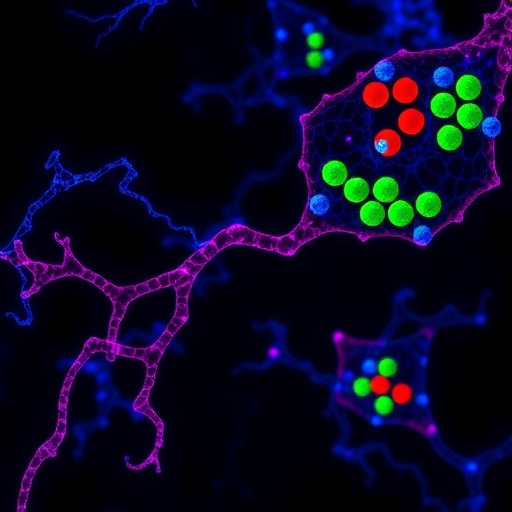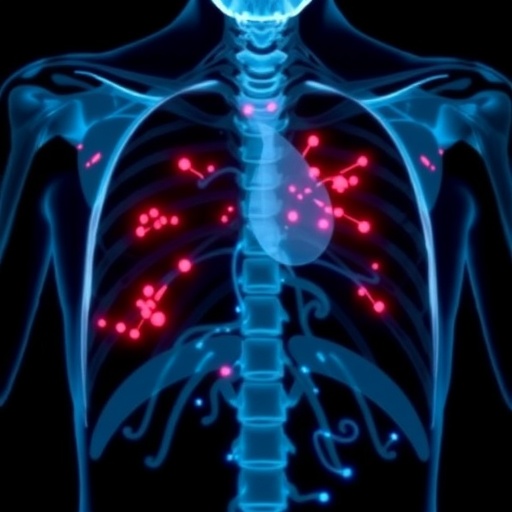Credit: Ciaran Simms and Gregory Tierney, Trinity College Dublin.
Bioengineers have compiled a set of recommendations that could significantly reduce concussions and other head injuries in rugby union, having assessed how head impacts and movement vary based on the position on the body where tackles are made. The bioengineers discovered that the risks are not precisely the same for the two groups, as tacklers are at higher risk of a head injury assessment (HIA) than ball carriers. Chief among the findings is the discovery that tackles made to the lower trunk of the ball carrier's body (roughly around the pelvis) – as opposed to the upper trunk (chest and shoulders) or upper legs (thighs and knees) – lead to a reduced risk of tacklers receiving head injury assessments (HIAs).
Additionally, the bioengineers used 3D motion analysis lab trials with professional rugby players and model-based image-matching techniques to examine the effect of tackles made at different points on the body. They measured resultant head kinematics and compared these with concussion injury thresholds to draw up their recommendations. Their results have recently been published in the Journal of Science and Medicine in Sport.
The work was conducted over a number of years by Associate Professor, Ciaran Simms, and PhD Researcher, Gregory Tierney, from Trinity College Dublin's School of Engineering and Centre for Bioengineering.
Protecting the tackler
Prevention strategies should place emphasis on tackling lower-risk body regions such as the lower trunk, as nearly four out of five (77%) tackler HIAs are caused by tackles to the upper trunk (47%) and upper legs (30%). Specific tackler recommendations include:
- Make contact at the lower trunk
- Take shorter, faster steps when approaching the ball carrier
- Avoid planting feet
- Keep head up and face the ball carrier
- Do not look at the ground
- Place head on the correct side of the ball carrier
- Protecting the ball carrier
The bioengineers found that high-impact tackles to the upper trunk (with no head contact) can cause ball carrier head motion similar to that reported for concussion injuries, but tackling the mid/lower body trunk could reduce this by around 50%. This was shown by computer modelling and motion analysis lab trials.
Professor Ciaran Simms said: "The physical and high-impact nature of rugby union has made head injuries and long-term brain health a concern, and the 2016-17 English Premiership rugby union season was the sixth consecutive one in which concussion was the most commonly reported match injury – contributing to 22% of all match injuries during that season. Our findings have helped us better understand the mechanisms of head impacts in rugby union and resulted in these recommendations, which we hope may guide prevention strategies and reduce head injury assessment risks for athletes."
Gregory Tierney said: "The findings from this project provide an evidence base, at the elite level, for coaches to develop and implement technical-based concussion prevention strategies for players."
"Our focus was to ensure that the findings had a practical relevance on the field. Upper trunk tackles were identified as a risk factor for direct head impacts for tacklers and high inertial head kinematics (head motion from impacts to the body) for ball carriers. Tackling at the upper trunk of the ball carrier should be discouraged. Instead, coaching strategies should place emphasis on tackling at lower head injury assessment risk body regions such as the lower trunk."
"Furthermore, there needs to be a greater focus placed on safe contact technique in the tackle. We identified easy-to-coach characteristics, such as keeping your head up, eyes on the ball carrier and feet active, that can really help reduce head injury assessment risk. Surprisingly, these characteristics are not always exhibited by elite players."
###
Media Contact
Thomas Deane
[email protected]
353-189-64685
@tcddublin
http://www.tcd.ie/
Original Source
https://www.tcd.ie/news_events/articles/bioengineers-identify-safer-way-to-make-rugby-tackles/8993 http://dx.doi.org/10.1016/j.jsams.2018.05.010




